Tenant improvement allowances (frequently referred to as “TI”), are an enticing and common incentive that many restaurateurs and landlords incorporate in their lease agreement because it’s a win-win for both parties. The landlord gets the benefit of someone building out their space and committing to rent it, which will in turn attract future tenants and customers to the area, while the tenant gets the benefit of building their dream restaurant on someone else’s tab.
However, a TI allowance can have devastating tax consequences if the lease is not structured properly. Generally, the entire allowance is considered taxable income in the year in which it is received. Yes, you read that correctly; even if you haven’t opened your restaurant, you can be taxed on the entire allowance upon receipt.
In this article, I will show you how to structure the lease so that your TI is not taxed, and instead is applied towards your build-out costs.
Ownership of the Assets
How the TI allowance is taxed depends on who owns the resulting improvements. If the landlord owns the improvements, then the tenant is not taxed on the allowance, and it can be applied towards the cost basis of the improvements purchased. This is the ideal situation. If the tenant owns the improvements, then the allowance is considered taxable income to the tenant in the year in which it is received and the improvements are depreciated over 15 or 39 years (depending on the improvement type) beginning in the year placed in service. In this scenario, the tenant might get stuck with a tax bill even if they’re not operationally profitable or existent. The restaurant may be able to claim accelerated depreciation (under bonus depreciation) for tax purposes in the year the business opens, but that’s only 80% and the program is being phased out entirely anyway.
With that said, it is more beneficial (from a tax perspective) for the landlord to own the resulting improvements or assets funded by the TI allowance, instead of the tenant. If the landlord agrees to that, then the lease agreement should clearly state who is paying for—and who owns—the improvements. If the landlord agrees to this then your allowance can be used for real property (build-out, improvement, etc.) and personal property (equipment, furniture, etc.) and you will not have to pay tax on the allowance proceeds.
If a landlord is not willing to make these concessions for their own tax interests, then you have another option. This brings us to Section 110.
Sec 110 Disclosure
Sec 110 of the Internal Revenue Code allows a restaurant tenant to exclude the allowance from their taxable income (to the extent the allowance doesn’t exceed the costs of the improvements) if:
- The lease term is less than 15 years;
- The allowance proceeds are used only for real property improvements (aka build-out); and
- The lease specifically states that the allowance is for real property improvements.
If these requirements are met, then the IRS will consider the improvements as owned by the landlord and the tenant will not be taxed on the allowance. Instead, they will apply the allowance towards the cost basis of the improvements as if the landlord owned them. The result is that the tax depreciation deductions for these improvements will decrease, but at least the entire allowance will not be subject to tax.
For the Sec 110 safe harbor to apply, the landlord and tenant must disclose certain information on their tax returns. This is referred to as a Sec 110 disclosure. By default, we consider this disclosure each time we prepare and file a restaurant tax return, therefore restaurants should confirm that their accountant is doing the same.
Negotiating Your Lease
Involving your accountant in the lease negotiation process will help ensure there are no tax surprises and that you are considering all the financial implications of your lease. Here is a list of everything you need to know when negotiating your lease to ensure it qualifies under the Sec 110 safe harbor:
- The lease term must be less than 15 years including options to renew.
- The lease must state that the allowance or a portion of the allowance is for the construction or improvement of real property used in the restaurant. The entire amount doesn’t need to be for improvements, but the portion that is not will be subject to taxation.
- Understand whether the landlord plans to do a cost segregation study to separate real property from the personal property for their own taxes. If so, this can significantly impact the portion of the allowance that becomes nontaxable. To avoid this, consider adding language to the lease agreement that clearly states that the landlord owns the personal property portion of the allowance.
- The allowance (if not reimbursement of expenses) must be expended within 8.5 months after the year it is received. To ensure this is satisfied, the allowance can be paid in installments.
If the terms of the lease don’t qualify under the Sec. 110 safe harbor, then the lease should clearly state who is paying for—and who owns—the improvements. It might be difficult to get the landlord to agree to “owning the improvements”, therefore a sec 110 qualifying lease is usually preferable.
If you need help reviewing your lease and understanding the tax implications of your negotiations, feel free to contact us to learn more about what we do and how we can help.







